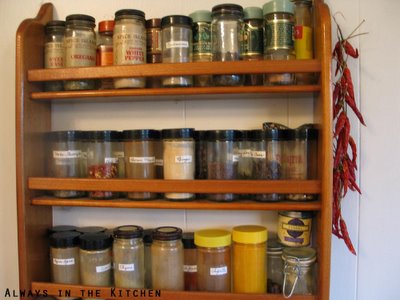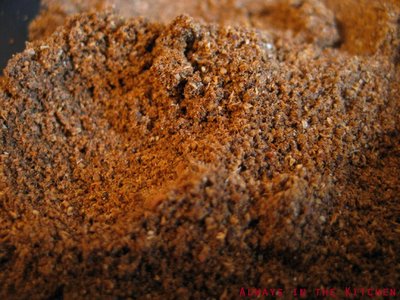
This post was written for From My Rasoi - Cooking for Love, where Meena knows that "A way to one's heart is through their tummy."
Okay, I'm - dare I say? - cheating (just a little) with this one, but only in that I'm not actually cooking Indian food for Valentine's Day dinner. If I were, though, this is what I would make. This is a simplified Chicken Korma that can be easily put together by even the most distracted cook, and yields a creamy, mildly spicy dish that warms your heart on its way to your stomach.
The boneless chicken cooks in the richly scented gravy to a silky tenderness, and the occasional burst of flavour from one of the few whole cloves or cardamom pods makes each bite take on a slightly different but equally delicious character.
I have adapted this from Quick and Easy Indian Cooking by the inimitable Madhur Jaffrey. In the picture, the chicken pieces are perhaps a little larger than ideal, but a bit too large is preferable to chopped too small. Pieces the size of a walnut in its shell are good.
Quick Chicken Korma
1 1/2" fresh ginger, peeled & roughly chopped
6 cloves garlic
4 tablespoons canola oil
3 bay leaves
2" cinnamon stick
8 cardamom pods (green)
4 whole cloves
1/4 teaspoon whole cumin seed
1 small onion (about the size of a lime) chopped finely
1 tablespoon ground coriander seed
1 tablespoon ground cumin seed
2/3 cup canned diced tomatoes
4 boneless skinless chicken breasts, raw, diced slightly large
1/2 teaspoon cayenne pepper
1 teaspoon kosher salt
3 tablespoons cream
Grind the peeled garlic and ginger into a smooth paste in a blender or mini-prep, adding a little water if necessary.
Heat oil in a large skillet over medium heat. Add bay leaves, cinnamon stick, cardamom pods, cloves, and whole cumin seed. Stir until it starts to pop, then add the finely chopped onion. Stir well, and cook until the onion gets a little translucent, with browned edges. Add the coriander and ground cumin, and stir and fry for about 30 seconds. Add the tomatoes, and stir and fry for 30 seconds, then add the diced chicken, the cayenne, the salt, and the water. Bring to a boil, reduce the heat and allow to simmer, uncovered for 15 minutes, stirring occasionally. Add cream, and cook for another 8 - 10 minutes, stirring as needed until sauce becomes thick.
Serve with basmati rice, or flatbread.
Serves either 4 for dinner or 2 for dinner, with enough leftovers for 2 lunches the next day. I had to defend my leftovers with threatening fork-movements and a wild look in my eye.









